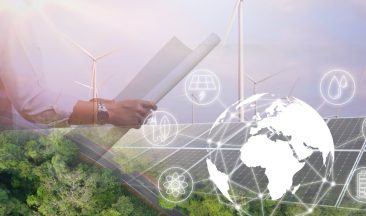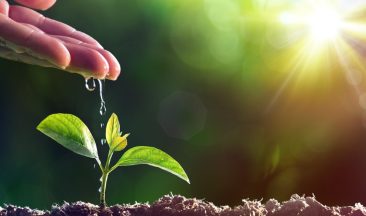Agriculture in the 21st century faces unique challenges. From a population projected to grow by over a third by 2050 to a changing climate and the need to get to net zero emissions in the same time frame, there is lots of work to be done to achieve food security for the future.
In these unprecedented times, it’s easy to be overcome with uncertainty. Hadar Sutovsky, Vice President of External Innovation at ICL, notes a few technological innovation areas within the agri-food industry that can make it possible to push agrifood systems towards sustainability and resilience, and help provide sufficient, healthy, and sustainable food.
- Alternative Proteins
- Food waste mitigation
- Animal health
- Aquaculture
- Ag Biotech
- Carbon sequestration
- Digital Agriculture as well as automation & robotics
- Vertical & indoor farming
These key sectors will continue to be active with innovation in 2023. As one of the global leaders creating impactful solutions for sustainability challenges in the global food, agriculture, and industrial markets, we’re sharing our expectations for innovation in precision agriculture in 2023. The areas that we anticipate to be ones to watch for are automation & robotics, precision agriculture, digital agriculture, and sustainability practices.
The Intersection of Robotics & Automation and Agriculture
Talking about robotics and automation in agriculture Hadar tells us “… they are promising technologies for enhancing agriculture’s efficiency and productivity. Farmers have started to experiment with autonomous systems that automate or augment operations such as pruning, thinning, and harvesting, as well as mowing, spraying, and weed removal. In the fruit tree industry, for example, workers riding robotic platforms can be up to twice as efficient as workers using traditional ladders.
Advances in sensors, artificial intelligence, and control systems allow for optimal implementation of integrated pest and disease management. Overarchingly, these innovations can help reduce labor costs, ensure optimized resource use, and enhance efficiency on the farm. This supports a key goal of growing more food with fewer inputs.”

Digital Agriculture
Digital agriculture solutions are rapidly changing the agriculture industry through the use of modern machinery and computerized tools. Decision-making can be more efficient with data from digital agriculture solutions, improving overall farm productivity. Digital agriculture will be an important part of agtech trends in 2023.
In digital agriculture, unmanned aerial vehicles (UAVs) are used to optimize operational efficiency, crop production, and crop field monitoring. UAV technology includes remote sensing and imaging to detect soil variation, irrigation problems, and fungal infestations.
The agriculture UAV market is projected to go from $0.88B in 2020 to $5.89B by 2030, fueled by new technologies and additional venture funding. Drone-related government regulations are also expected to rise. UAVs are also used in other areas of agriculture. For livestock monitoring, UAVs can track cattle and sheep in pastures. While it might be a challenging flight environment, UAVs can be used in smart greenhouses for crop scouting and inventory, inspecting structures, and even applying shade compounds. And for precision fish farming, drones have a place in efficient data collection on water quality and temperature, fish behavior, and wave velocity – with much lower labor costs.
Transparent Sustainability Practices
According to the United Nations (UN), global population growth to 10 billion is expected by the end of this century. The need to produce more high-quality food on less land in a sustainable way is imminent. The UN World Commission on Environment and Development defines sustainable development as “meeting the needs of the present without compromising the ability of future generations to meet their own needs.”
In 2023, agriculture sustainability trends will include a focus on transparency, circular economies, and reducing greenhouse gas emissions.
There will be a greater desire for transparency in sustainability practices. More and more, consumers care about where their goods come from and the processes used to create, supply, and transport them. Transparency will be increasingly of interest throughout the supply chain.
Circular economies and circular agriculture will become more common. With a focus on using minimal external inputs, circular agriculture can reduce agriculture’s footprint and resource requirements, ultimately addressing greenhouse gas emissions. Reusing and recycling materials is an important part of this practice and is typically used in smallholder farming.
Advanced technologies will play an important role in sustainability in agriculture. PwC estimates that artificial intelligence (AI) could reduce worldwide GHG emissions by 4% in 2030 through the agriculture, water, energy, and transport sectors.
More on the subject:
AgTech Trends to Watch Closely in 2022
The Role of AgTech in Making Agriculture More Sustainable
Top 10 Agriculture Trends to Watch in 2024
ICL’s Impact on These Agriculture Trends
ICL is focused on sustainability and innovation in everything we do. Precision agriculture, digital agriculture, and sustainability are all agtech trends that ICL is leading the way with.
ICL provides farmers and agronomists with e-learning tools and suggestion apps for knowledge sharing and the promotion of sustainability related to precision agriculture.
ICL also provides turf grass seeds, mineral fertilizers, and biostimulants to create perfect grass and exceptional results in a sustainable way.
ICL’s involvement in digital agriculture brings proven industry experience and know-how together with advanced, sustainable fertilizer solutions. Add in cutting-edge technology, and agtech isn’t just a trend. It’s big data, smart sensors, high-tech future with staying power.
ICL is driven by creating innovative, sustainable agtech solutions. In addition to becoming carbon neutral by 2050, our sustainability goals include a 30% reduction in absolute greenhouse gas emissions and a call for renewable energy to represent 50% of total energy consumption by 2040.
ICL plans to increase its circular economy and water savings impact by an additional 3% recycling of waste streams per year.
Additionally, ICL adheres to the highest environmental standards and uses cutting-edge technologies to create sustainable approaches in the global food and agriculture market.
Innovation in AgriTech in 2023
Agriculture, digital agriculture, and sustainability practices will be key trends that drive innovation and decision-making in the industry and on the farm. These technologies and trends support agriculture’s role in feeding a growing global population and caring for the Earth and its natural resources. As 2023 is off to a fast start, be on the lookout for some of these agtech trends for some new innovations from ICL!







